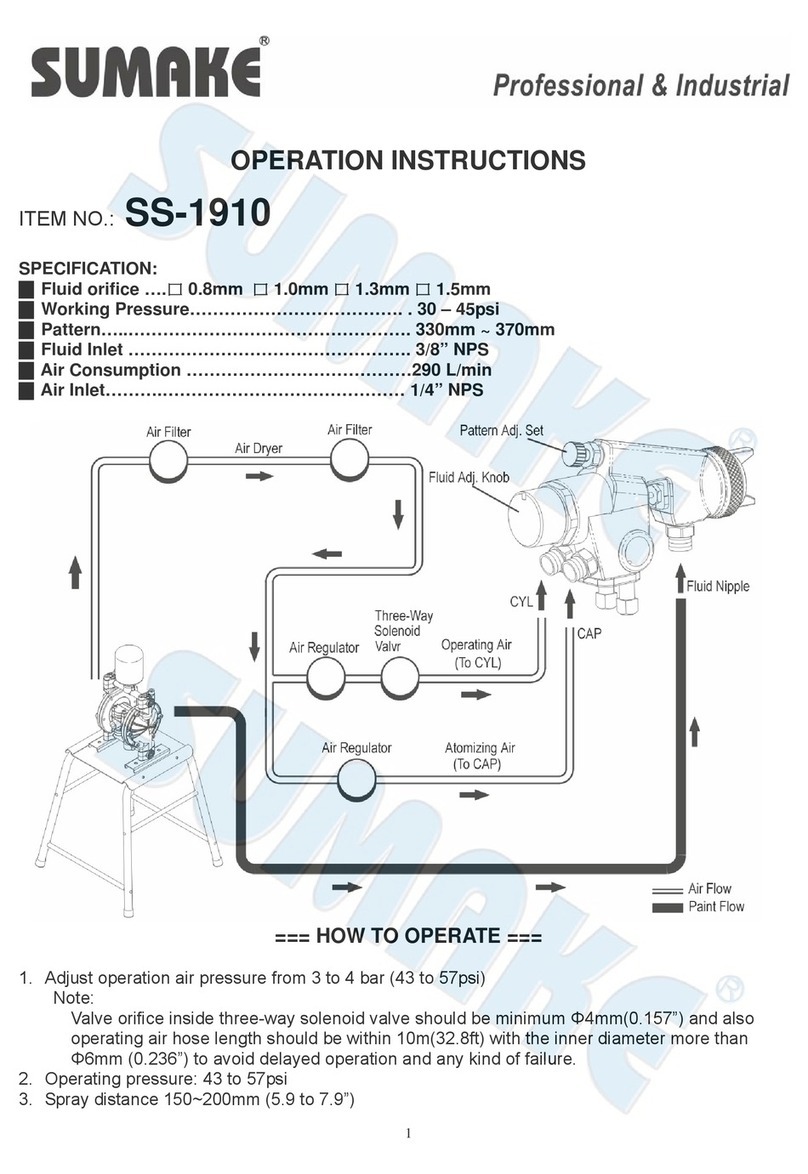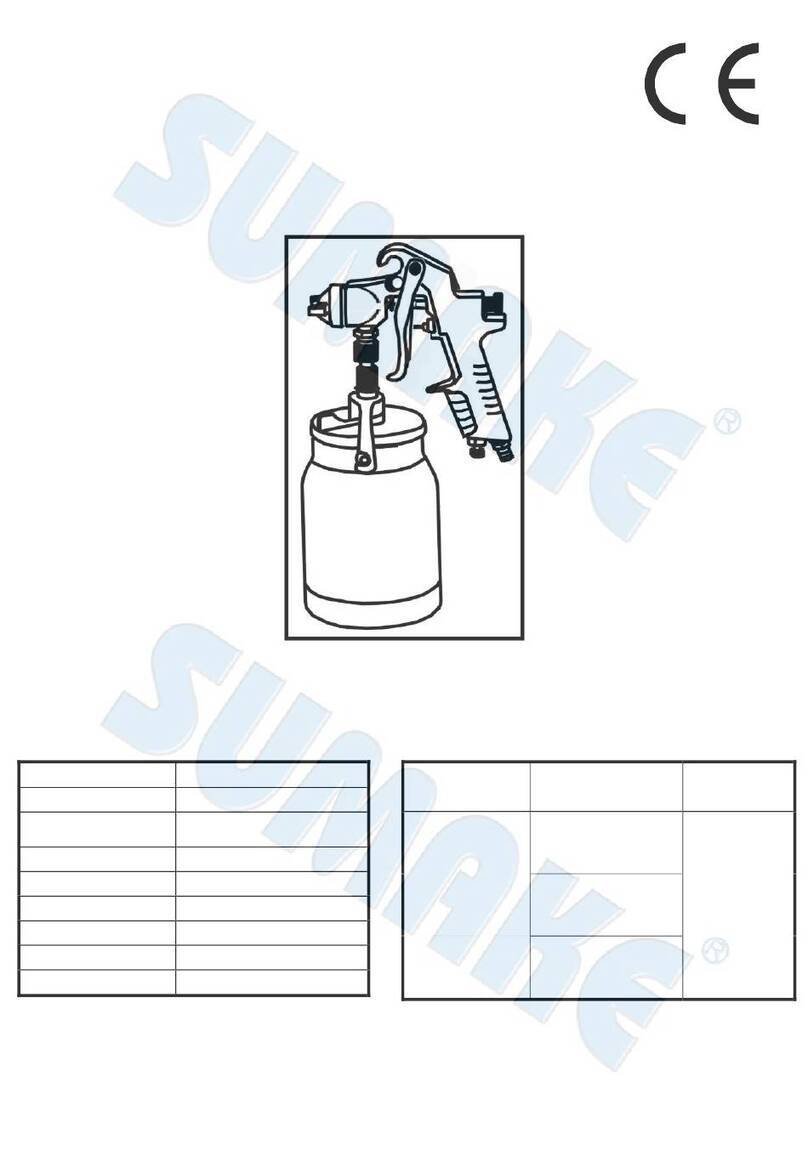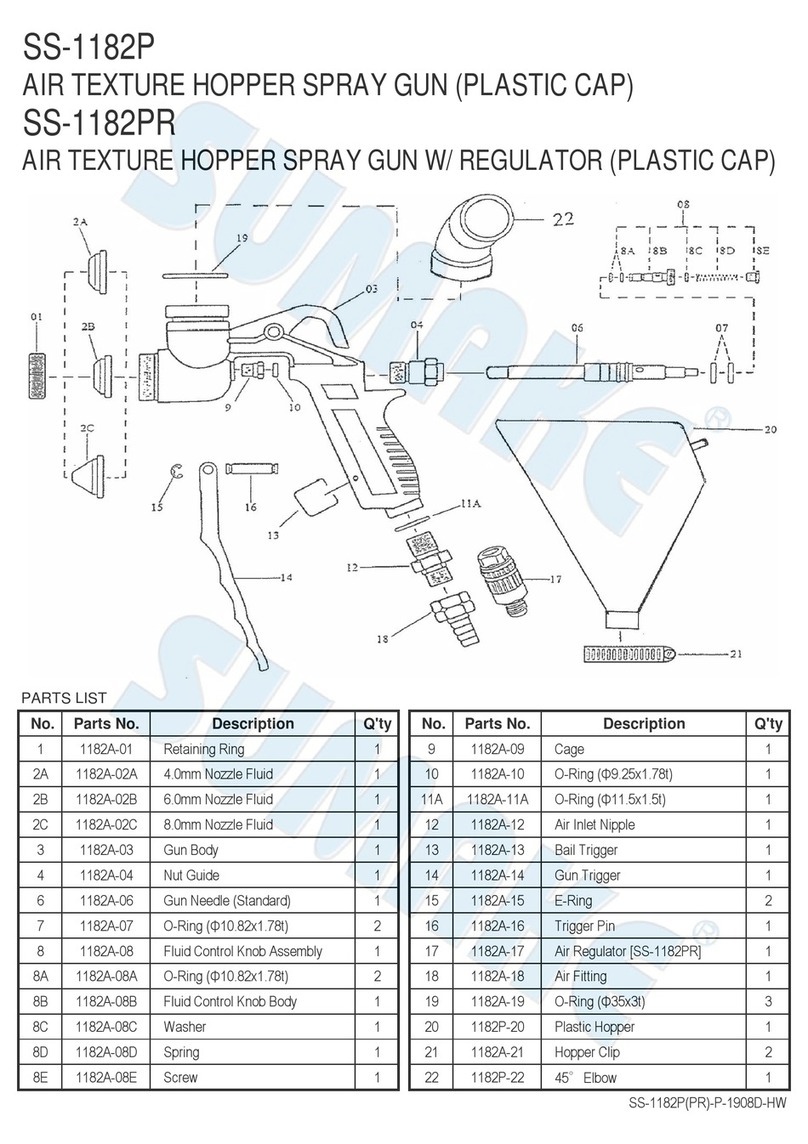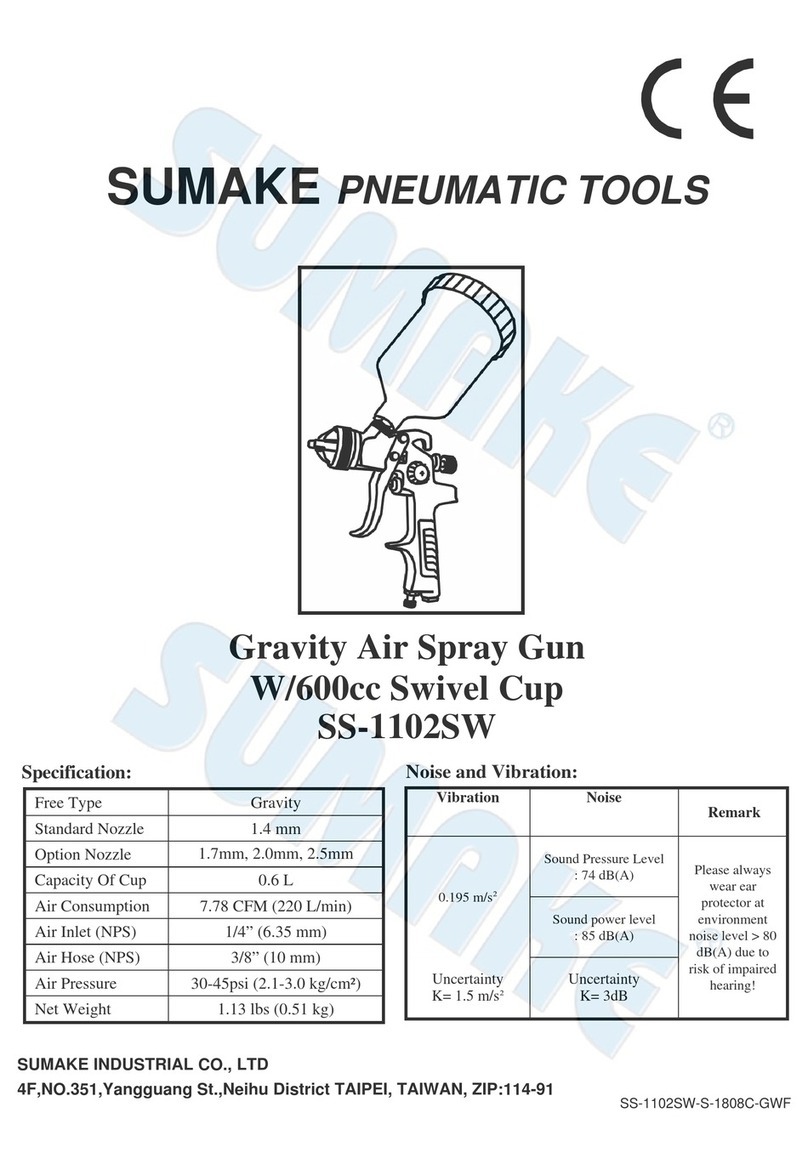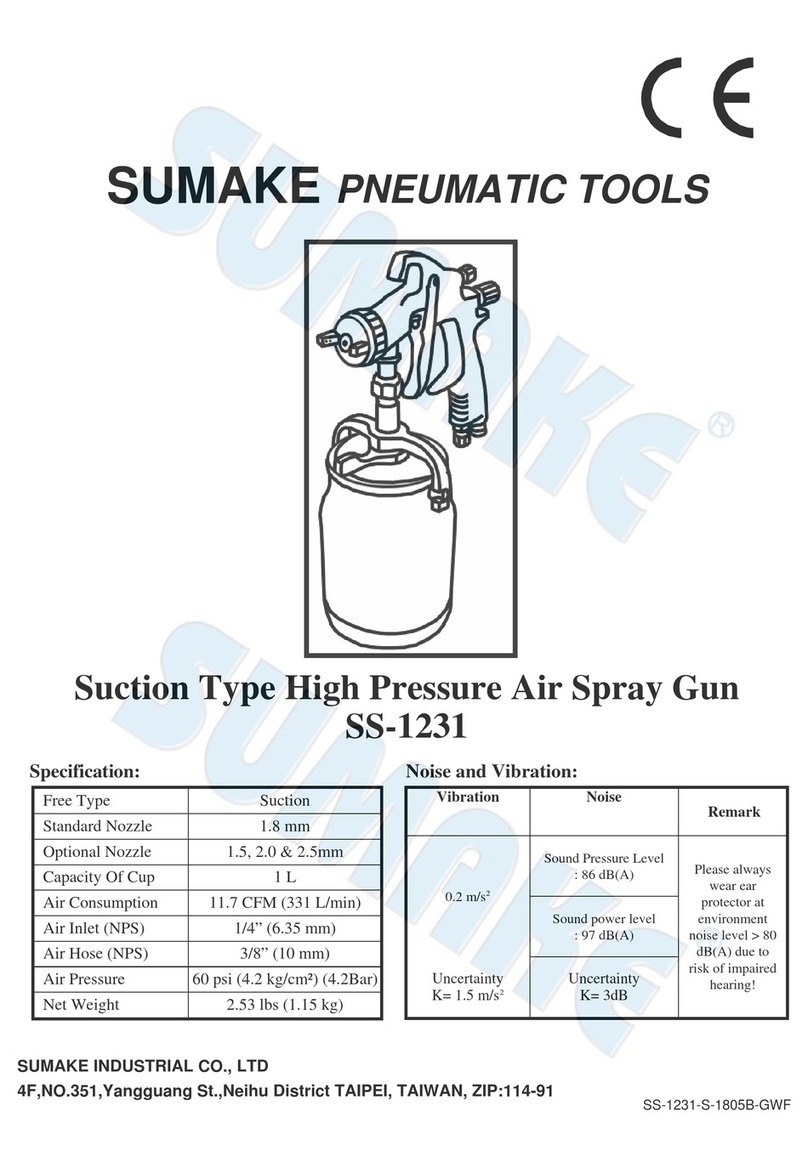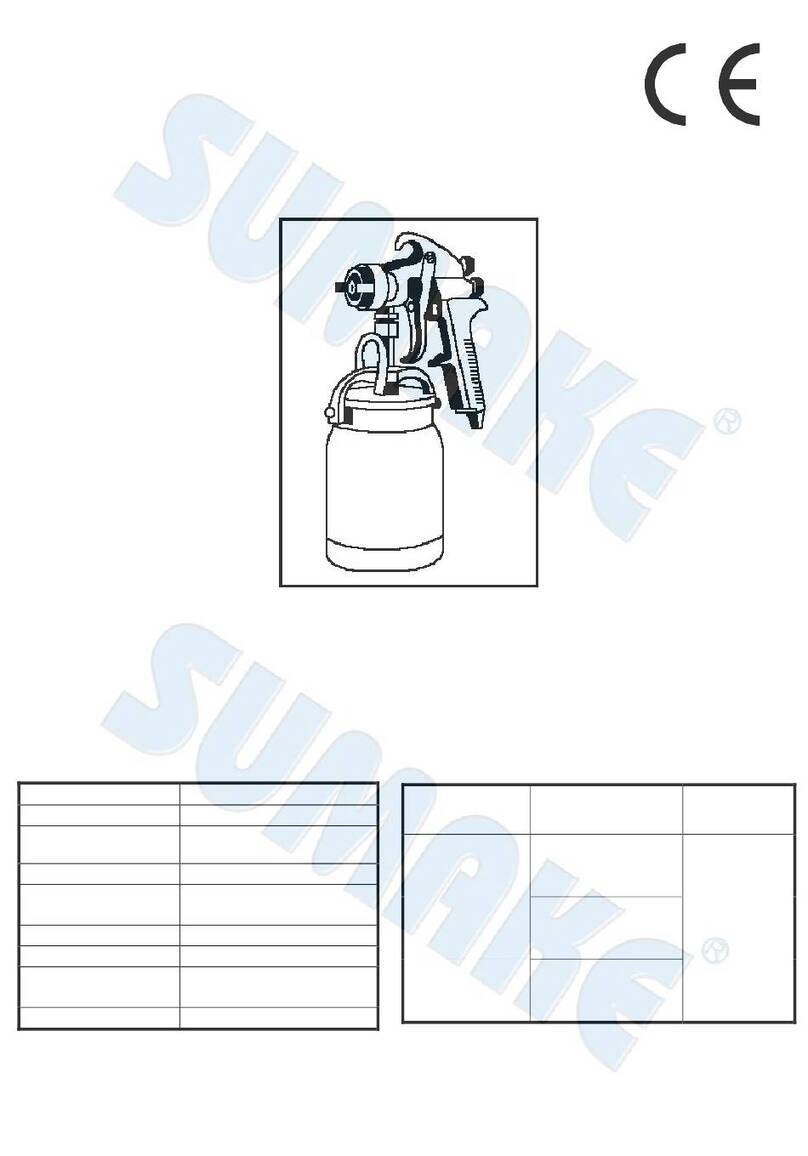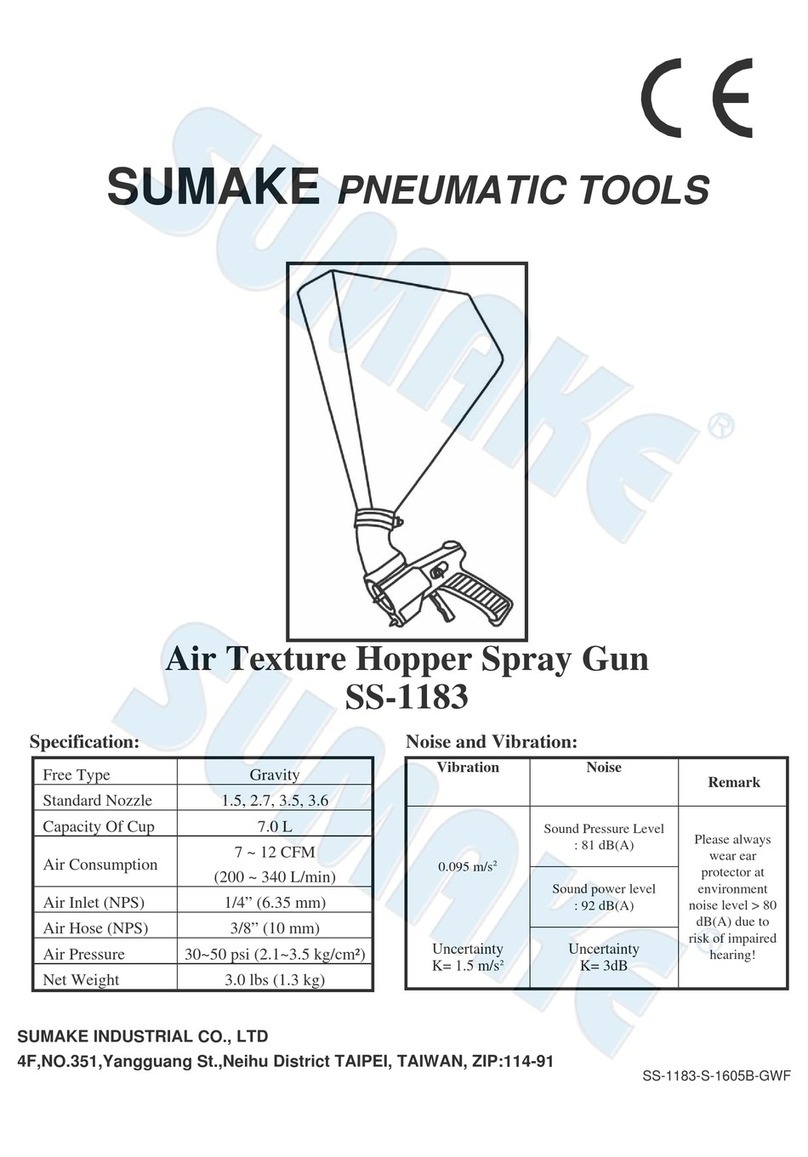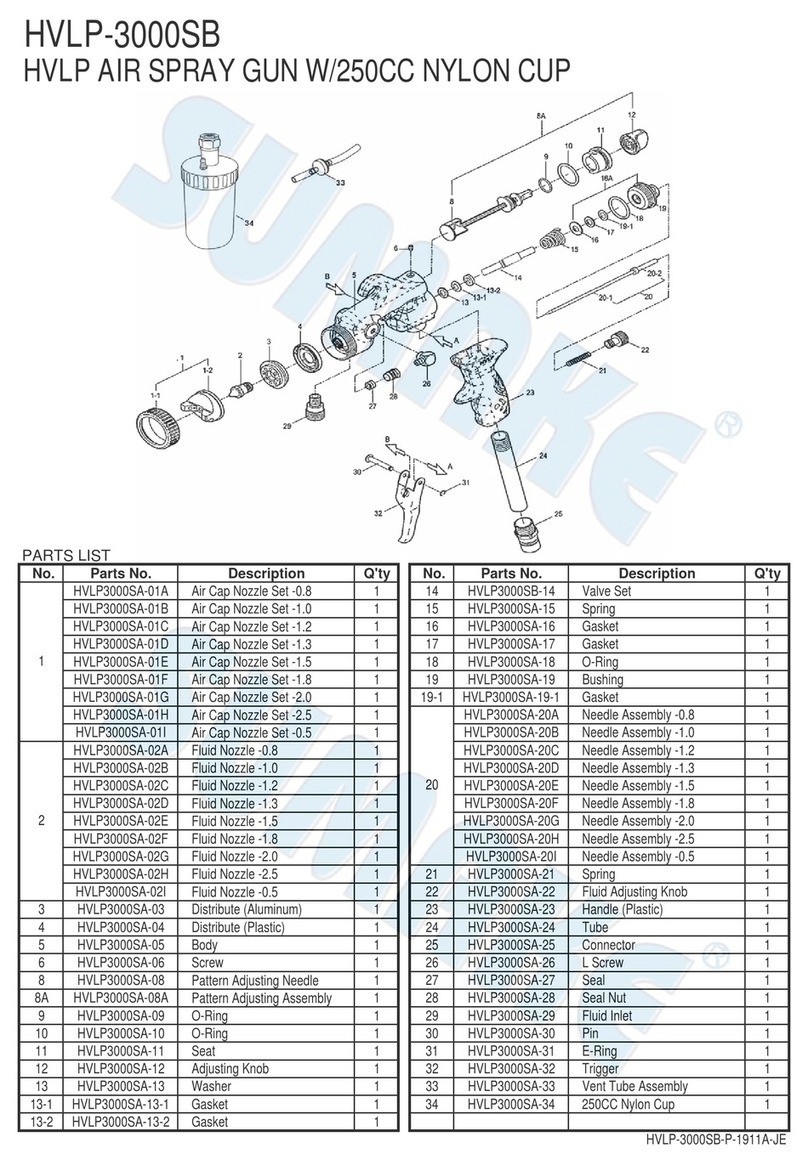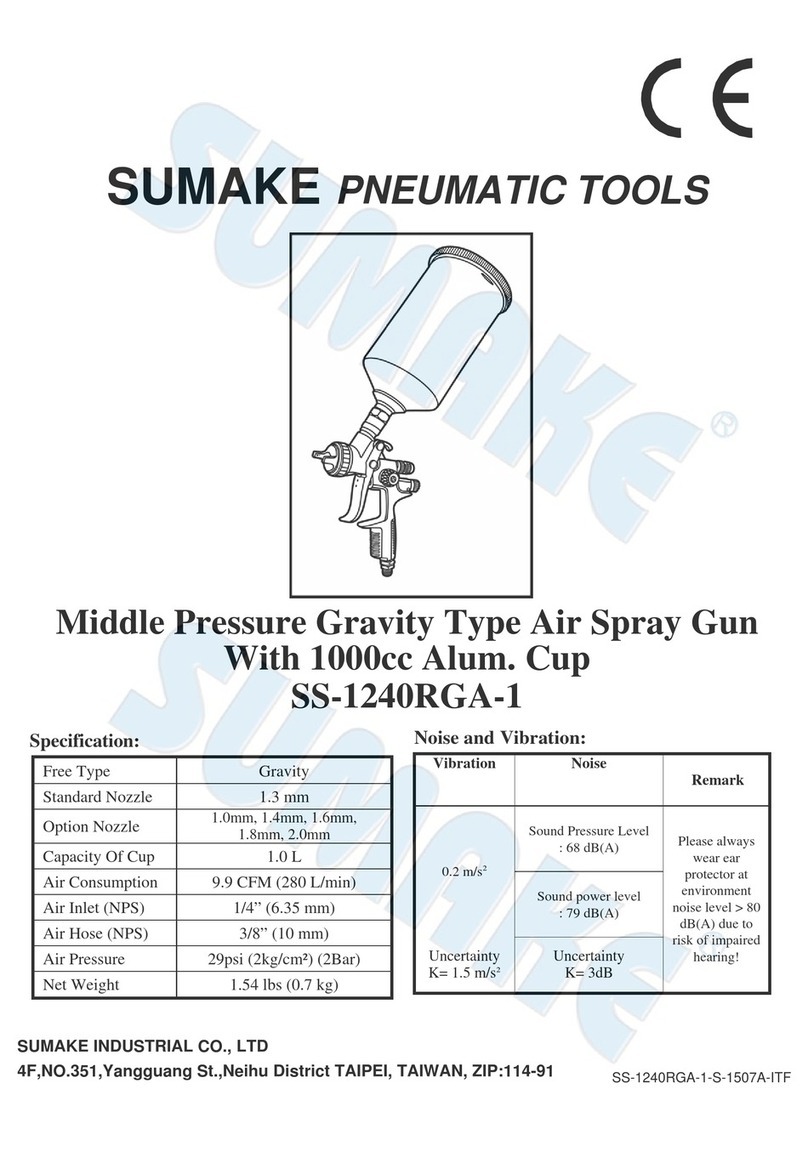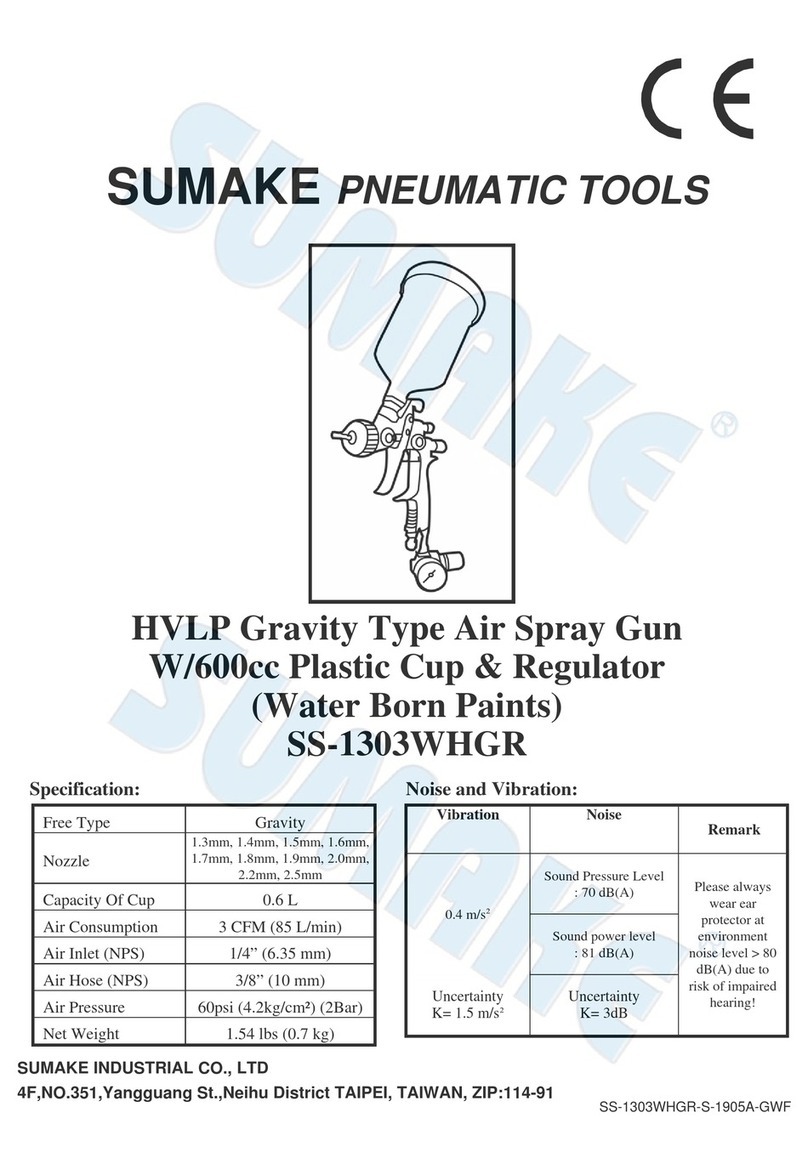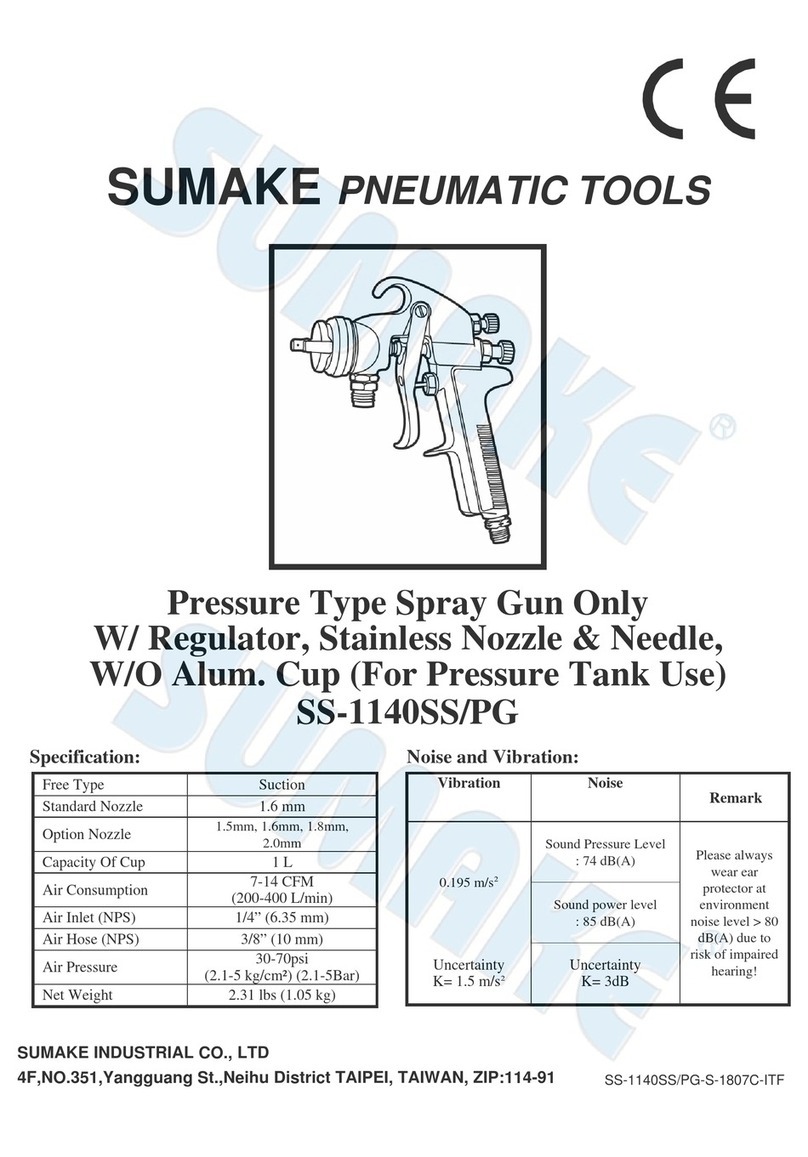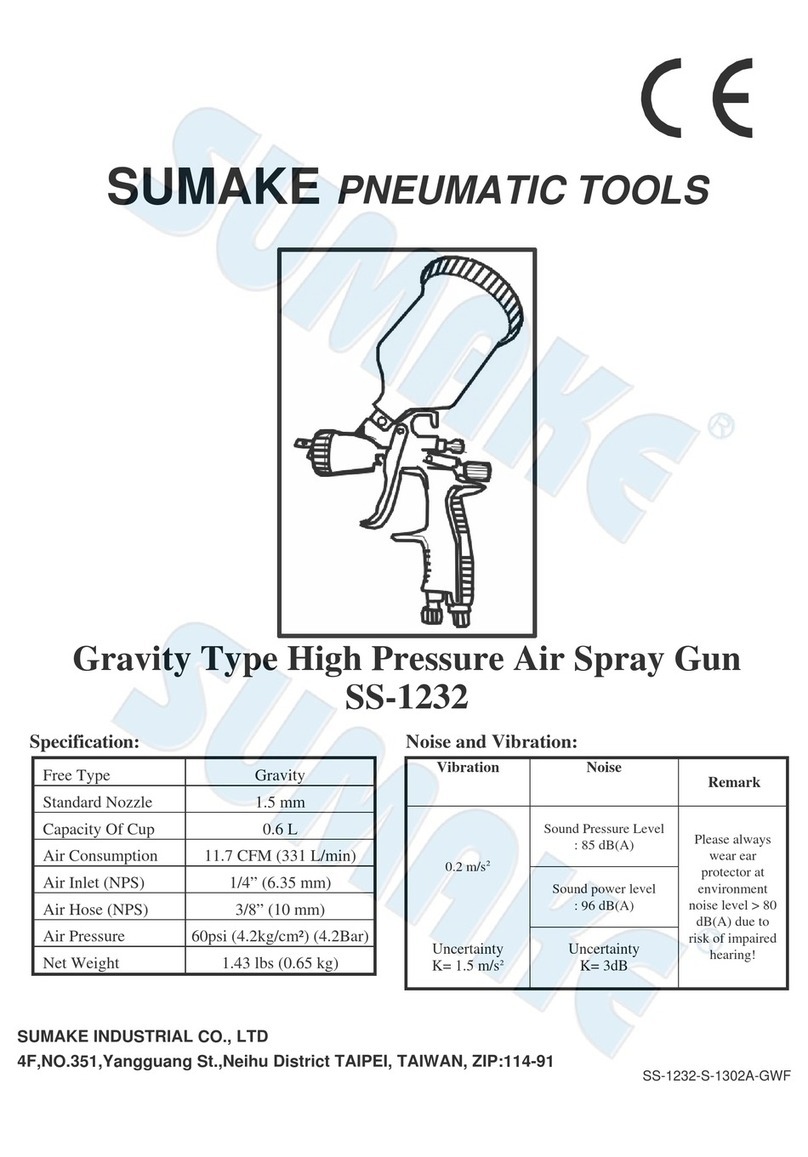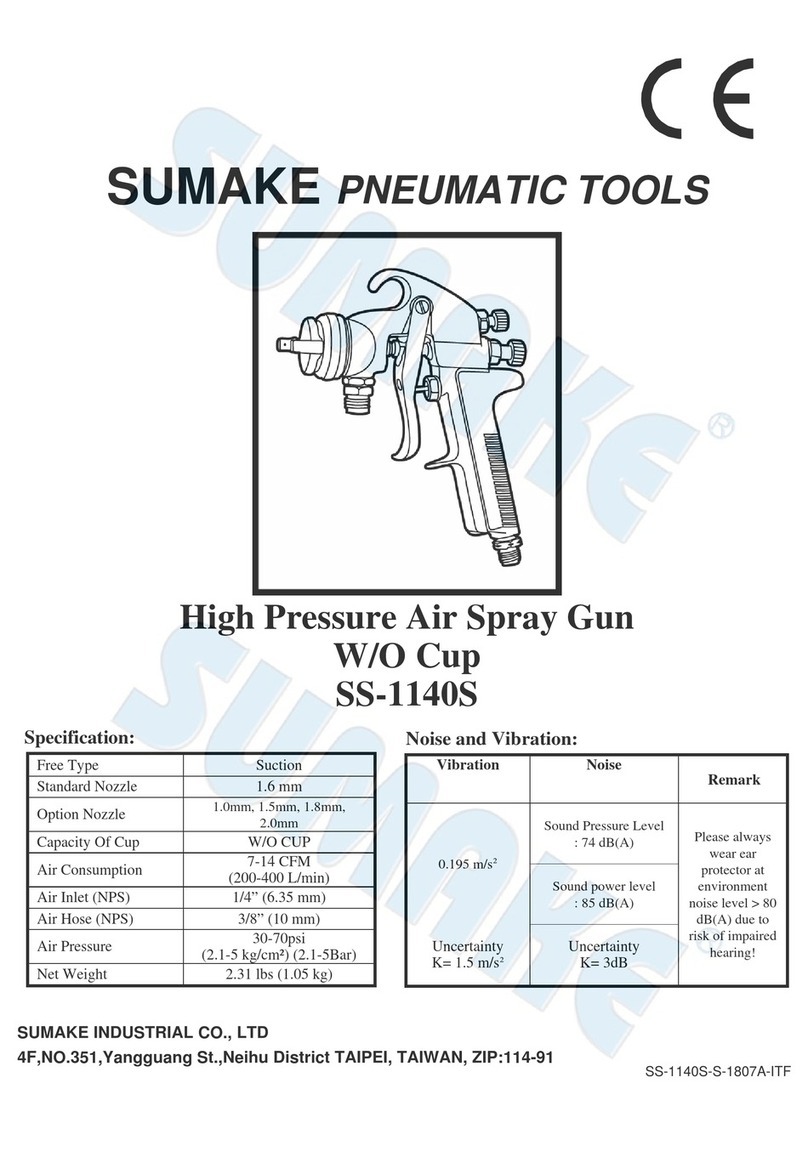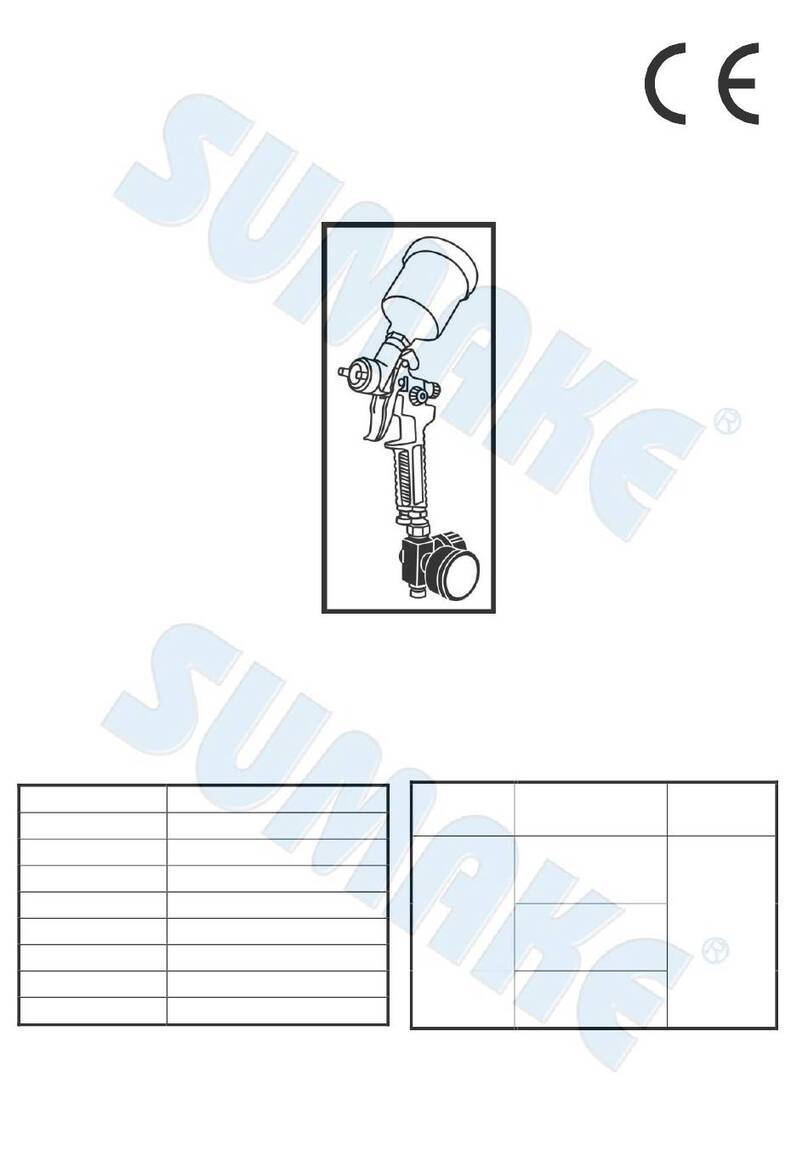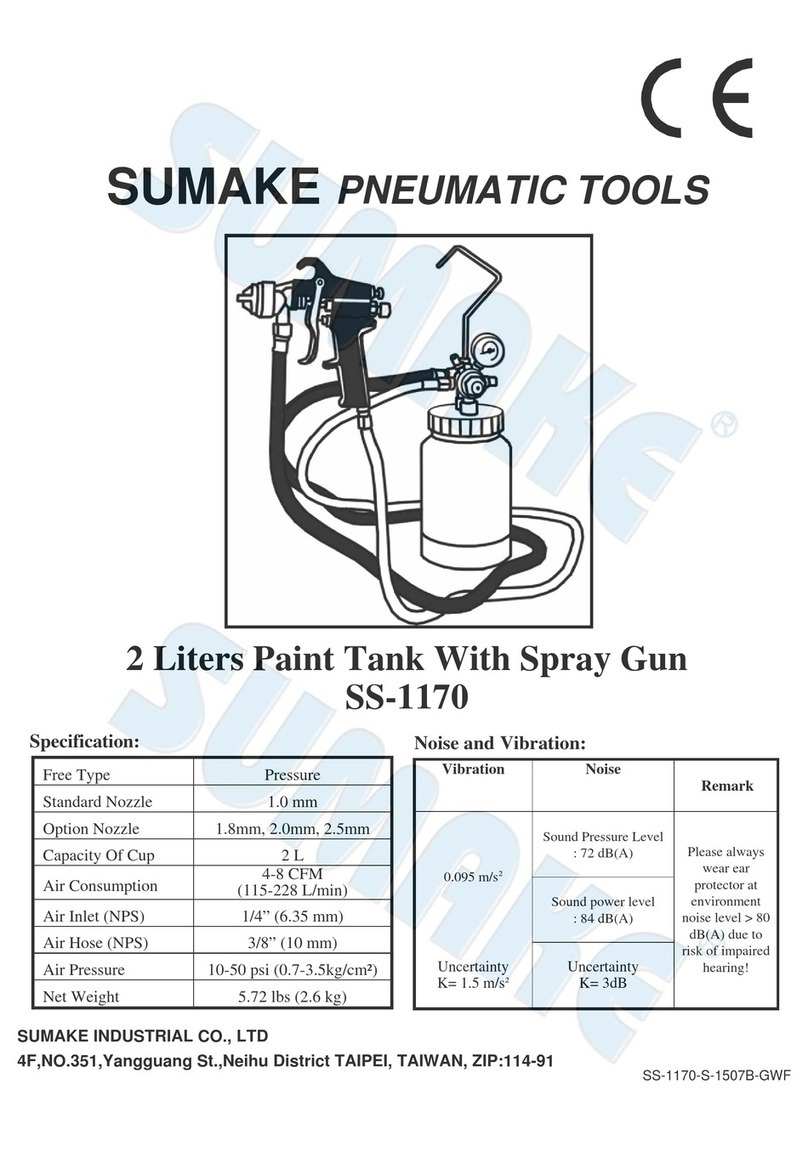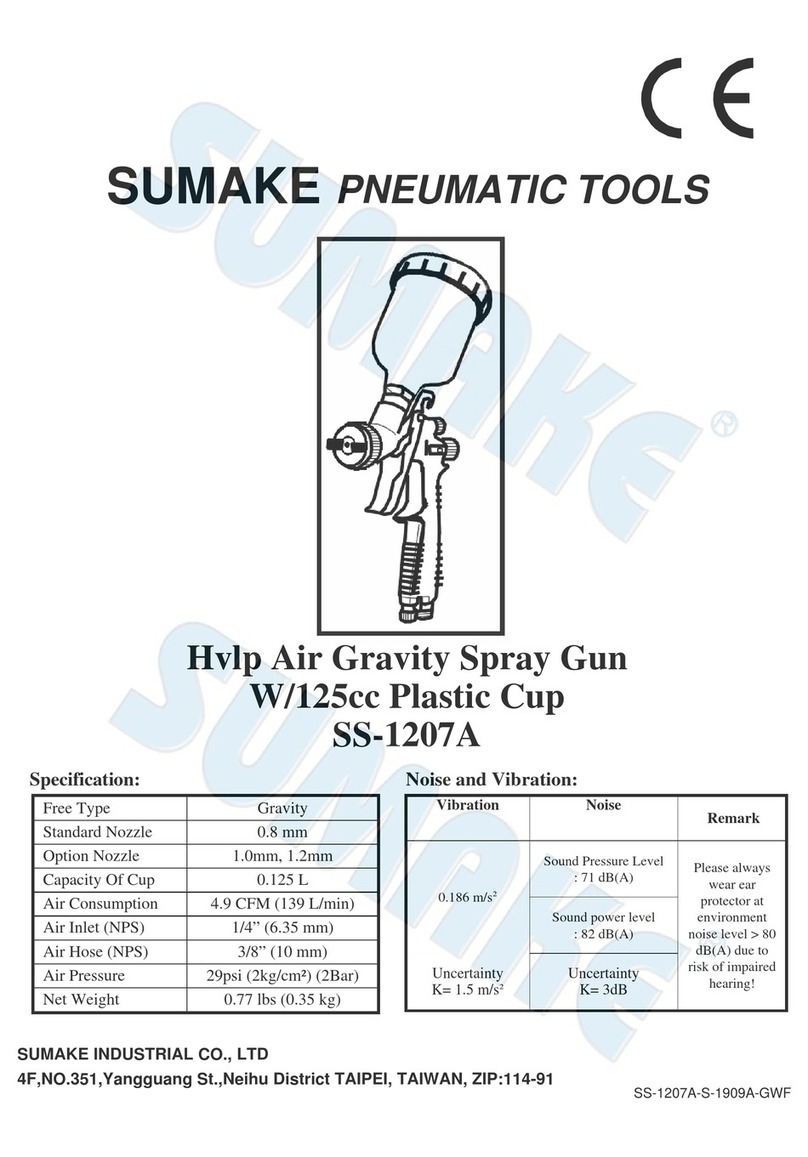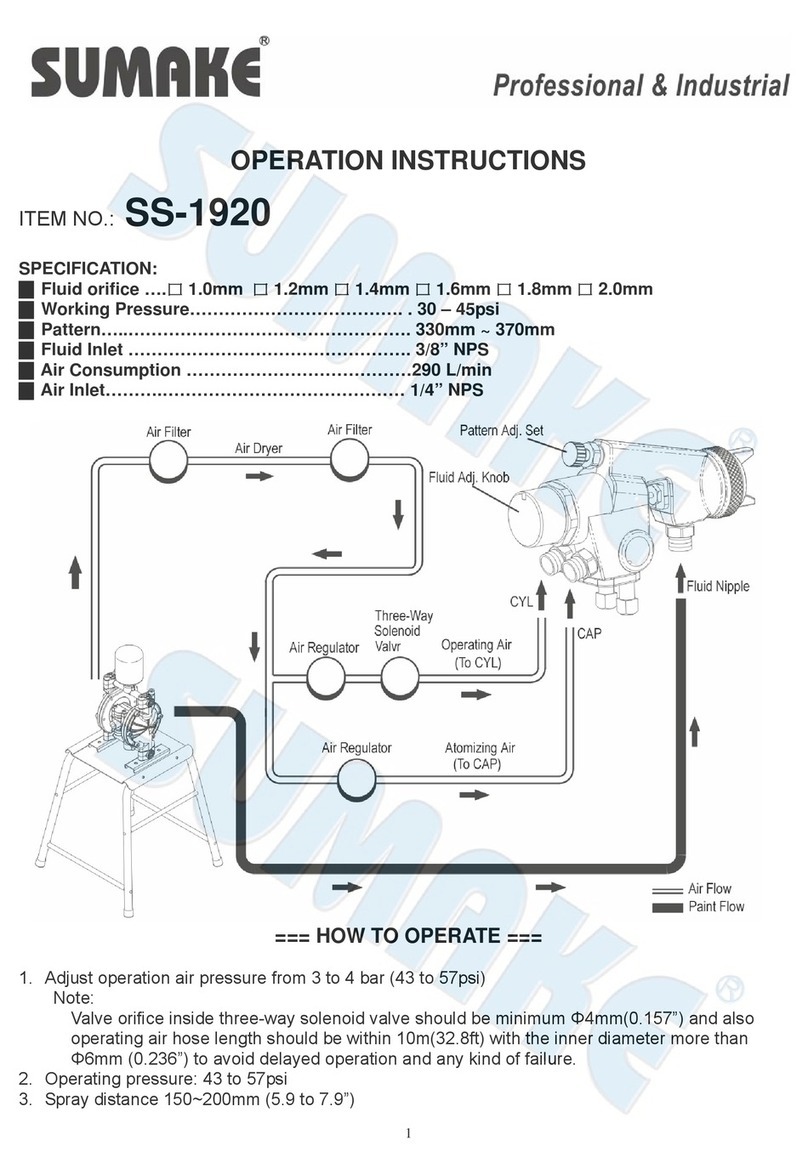
Foreword
Sumake is a manufacturer and exporter of air
tools since established. We have devote all our
efforts in improving quality and tools’ life. As
well as the noise and vibration of tools. Bring all
of you working efficiences, profits, and enjoy
using the tool is our principle.
Features
This tool is designed to meet an extremely wide
range of materials which need hole drilling by
meansof proper drill bit.
Operator‘s instruction
1. Main Applications
Perfect for hole sawing, valve guide reaming and
knurling, carbon removal, cylinder honing, and
drilling chassis frames and trailer bodies. Ideal
for jobs requiring lots of torque. Tool comes
equipped with dead handle.
2. Cautions for Use
2-1 Air pressure
Maximum performance is displayed at the proper
sanding speed, obtainable at a gauge pressure of
6.2 bar. Range-wise, this is an air pressure from 5
to 7 bar (70 to 100 psi)
57
2-2 Air line
Use a 3/8“ air hose between the compressor and
the tool . Compressed air is cooled and its water
content separated, as soon as the air leaves the
compressor.
Tool
Nipple
Coupler Recoil
hose
Leader
hose
Oiler Regulator
Water
separation Air
supply
Drain
daily
A portion of the water content, however, is
condensed in the piping, and can enter the tool
mechanism, and may cause trouble. So, install a
air filter and on oiler between the compressor an
the tool. Use a 3 HP or larger compressor fo
each sander.
2-3 Air hose
Clean the hose with a blast of compressed ai
efore connecting the hose to air tool. This will
revent both moisture and dust within the hos
from entering the tool and causing possible rus
or malfunction. To compensate for unusuall
long hose (over 25 ft), the line pressure should b
increased accordingly.
Drainage
2-4 The approved eye protector, ear-muff,
mouth-muffle, and gloves should be worn whe
operate this tool.
2-5 The working place shall be ventilative.
2-6 Release the on-off device in the case o
energy supply failure.
3. Operation, Adjusting And Replacin
Method
3.1 On-off device
To operate this tool, just push the lever (straigh
type) or trigger (Gun grip type) down. The tool
continuously rotating as one push the levero
trigger down and it might last running for fe
second.
For the sake of safety, put it on a hanger or on
a soft flat pad when not in use.
3.2 Change the drill bit
Disconnect the tool before attemping to put a
drill bit onthis tool. Use the attached chuck key
to untighten the collet, then insert an appropriate
drill bit according to which kind of material that
you will drill hole on as deep as it can reach.
Then tighten the collet again with the chuck key.
3.3 Rotatingdirection
If your tool is reversible, you can change the
rotating direction by switch the direction lever
near the trigger to your desired direction.
Forward, which is marked with an “F”, means
clockwise direction and reverse, which is marked
“R”, indicates the counterclockwise direction.
Before start operating thistool, please make sure
the rotating direction.
3.4 Use a center punch to locate the center on
where you wish to locate the new hole then apply
this tool. It will not only be more precise but also
prevent from the risk caused by the slip of a
rotatingdrill bit.
3.5 If the drill bit penertrate the workpiece, keep
the tool running makes it more easy to remove
this tool fromworkpiece.
4. Maintenance
4-1 Lubrication
Before connecting the hose , apply 4 or 5 drops
of #60 spindle oil at the air inlet. Use of a thicker
oil can lead to reduced performance or
malfunction. If a thicker oil is used by accident,
wipe it away immediately. Also, every 3 or 4
hours of operation, oiling is necessary.
4-2 Storage
Avoid storing the tool in a location subject to
high humidity. If the tool is left as it is used , the
residual moisture inside the tool can cause rust.
Before storing and after operation, oil the tool at
the air inlet with spindle oil and run it for a short
time.
4-3 Disposal
If the tool is too seriously damaged to be used
anymore, drop it in a resource recycling can.
ever drop it into fire.
4-4 Ordering service Parts
For further operational and handling information
or for replacement of parts and components,
contact the sale agent from whom you purchase
the tool or the service division of our company.
*In ordering parts and components, give each
part number, name and quantity.
Warning
1. This tool is not insulted for coming int
contact with electric power source.
2. It is forbidden to use this tool in explosiv
atmospheres and do not put any combustibl
material near the workpiece since it emit sparks
when grind with metal material.
3. The drilled trash might be very sharp.Be
careful while deals with this trash.
4. Prevent long hair or loose clothing fro
drawing in while operate this tool.
5. Never carry the tool by hose and beware of
whippingcompressedairhose.
6.Theworkpiece shall be fixed by proper device.
7. Keep your bodywell balanced as you operate
this tool and make sure that no people are within
immediate range of tool operation.
8.Disconnect tool when not in use and attempt
changing the drill bit.
9. Do not link the chuck key to this tool in any
means. The key shall be placed separately from
this tool
ST-M5035-I-1202A-D5
